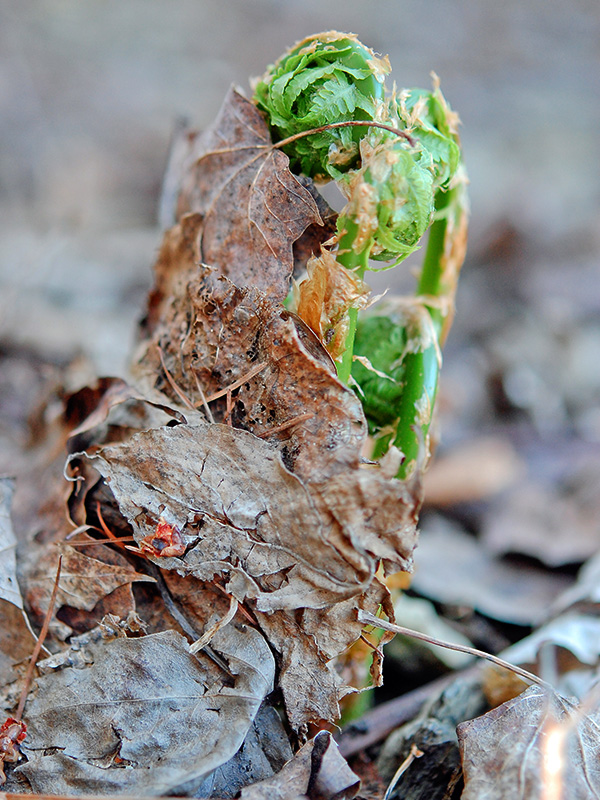I had at one time been enamored with hostas, collecting quite a few different (and expensive) cultivars of that Asian plant, especially for our shady areas. We gradually got rid of them.

Ferns, of course, are a lovely substitute for hostas. They’re certainly a part of our Northeast forest ecosystem, but we don’t expect the usual type of habitat value from them.
As Tallamy points out in The Living Landscape, even though ferns are one of the most ancient group of plants, insects haven’t figured out how to exploit them. However, they do provide cover for various creatures.
The bottom line is that they’re greatly preferable to the usual kinds of non-native groundcovers people typically use. (And I can’t help but wonder if there are associations between ferns and the rest of the forest community that we’re not even aware of yet …)
Here is a list of the ferns we grow in our habitat garden.
Resources
- Wild Seed Project:
- FERNS: Ancient plants for 21st century landscapes – great general info on ferns as well as specific info on 12 ferns to grow in your landscape
- Connecticut Botanical Society:
- Connecticut ferns—photos of ferns we’re likely to see here in NYS as well
- Ecological Landscape Alliance:
- NY Times:
Reflections
Yes, they are almost all some shade of green, and yes, they generally have a certain “ferniness”—soft texture, narrowly triangular, pinnately compound fronds coming from a clumped or creeping underground rhizome—but ferns are also beautiful, undeniably alluring, and truly a calming and unifying presence in the garden.
In many ways masses of ferns do for the shade garden what grasses do for the sun, harmonizing and uniting disparate colors and textures in a perfectly natural way. In fact, a shade garden without a good complement of ferns is simply incomplete.
~ William Cullina, Native Ferns, Moss & Grasses, p.25
